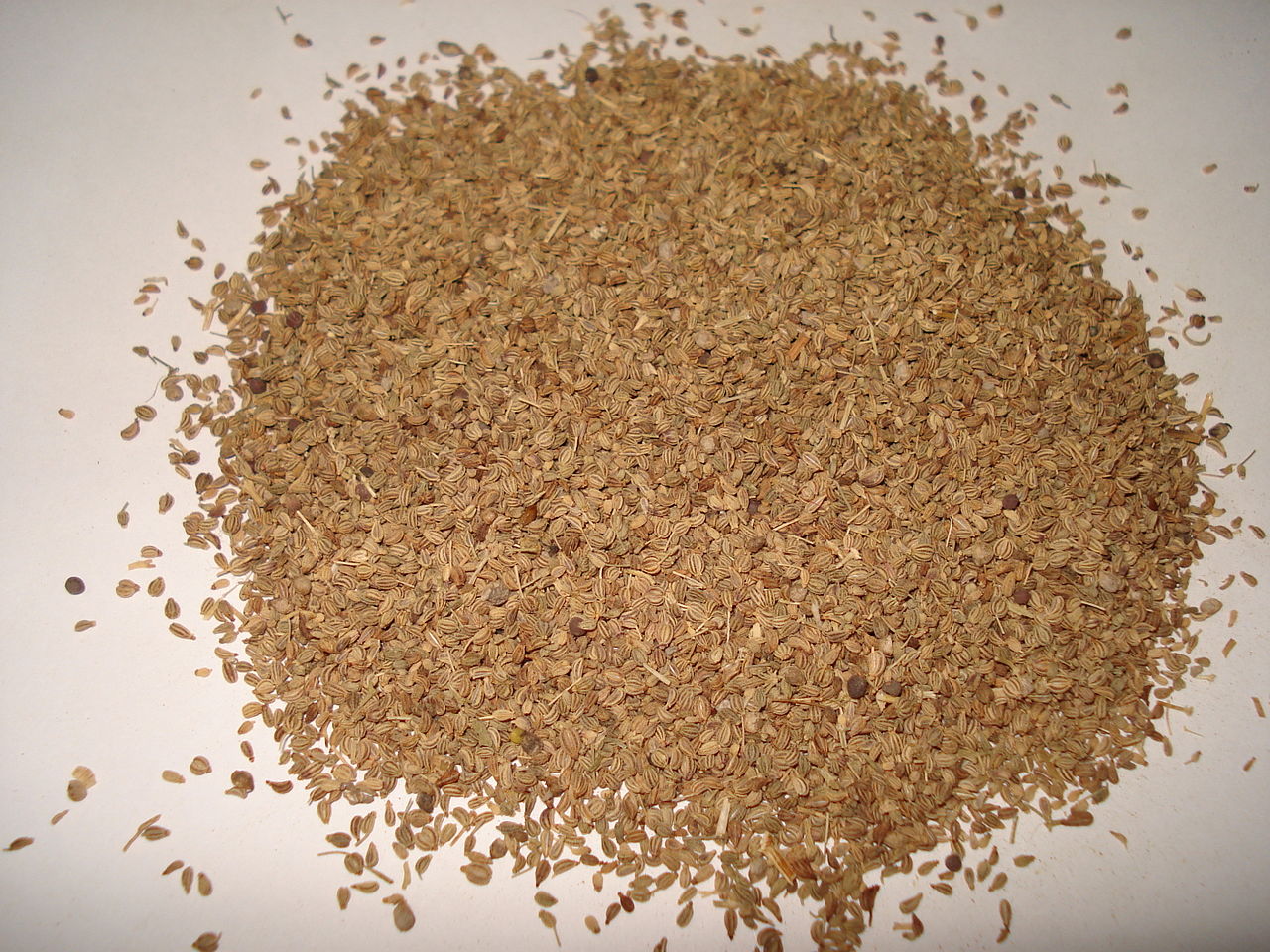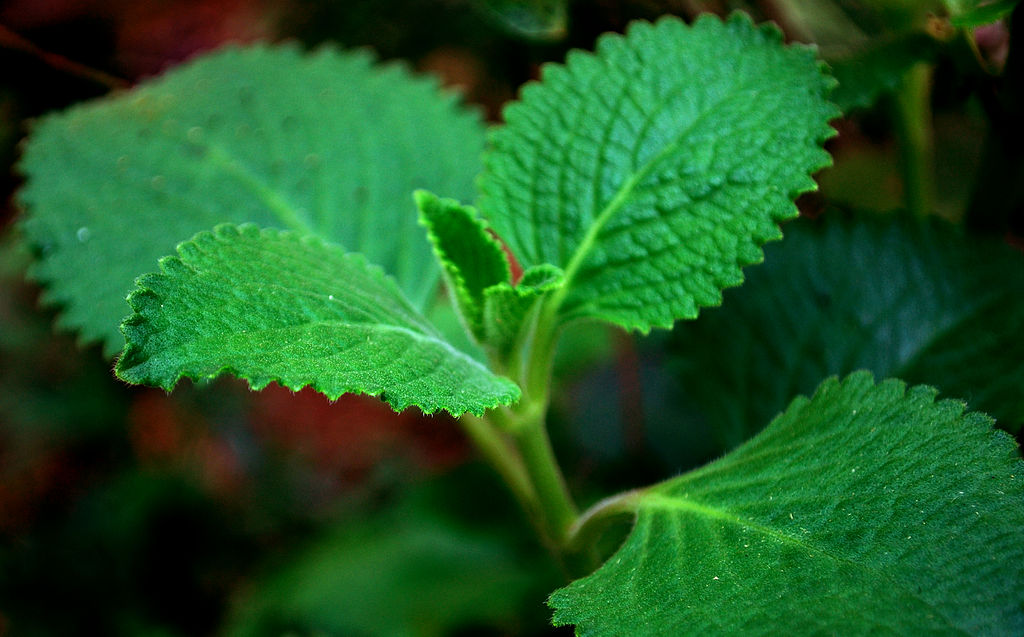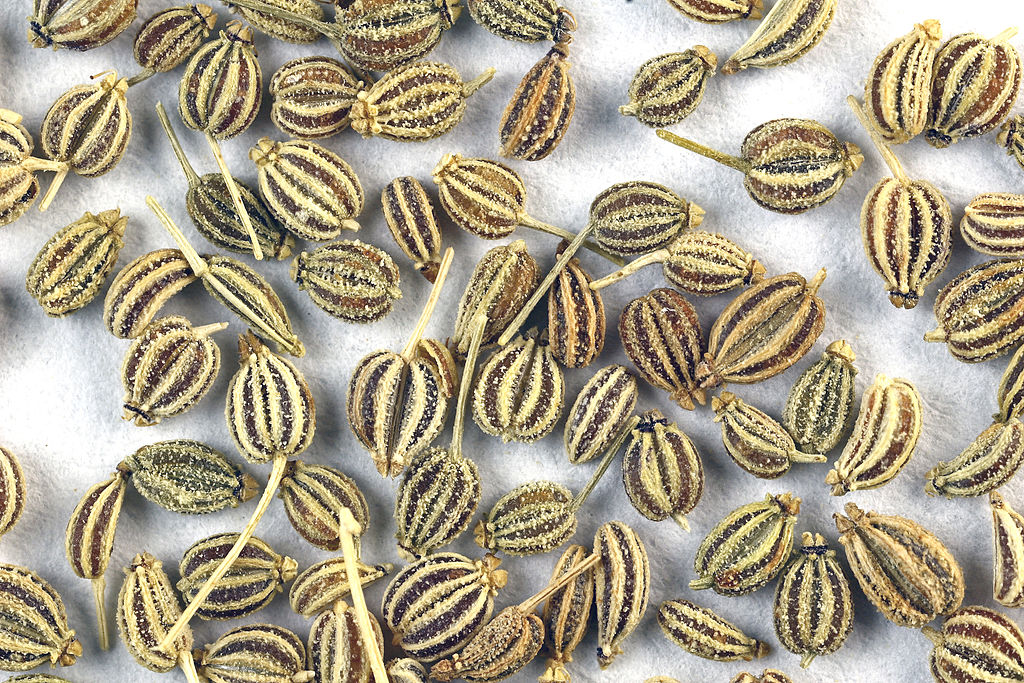The Incredible Ajwain
Scientifically known as Trachyspermum ammi, and locally called Ajwain or carom, this is an all-time favourite in Indian households. This spice is native to India and the Middle East. Despite the bitter and pungent taste that these oval-shaped seeds have, they are known to add a unique flavour and aroma to various dishes. Even the leaves of these plants are known to be highly beneficial and are as popular as the seeds. Referred to as “bishop's weed”, Ajwain can be easily grown at home in a small flower pot. The soothing fragrance and the thick green leaves make this plant very easy on the eye. With seeds and leaves which have much to offer both in terms of taste and health, Ajwain is practically an in-house doctor!

Ajwain seeds
Cultivation
The Ajwain plant is very easy to grow and is equally good to look at. It can be grown as a hedge in a small garden as it is quite prolific and fills up really fast. Ajwain is generally grown from seeds. The period from October to November is ideal for sowing the seeds. Stem cuttings too are a very convenient medium of cultivation. If seeds are being used, they should be sown a few inches deep. The pot should be kept in partial shade and away from strong sunlight. Care must be taken to only spray water. Ajwain is overly sensitive to water. Over-watering will destroy the seeds. This factor enables Ajwain cultivation even in drought conditions. After planting the seeds, they begin to germinate in 7 to 10 days. If cuttings are being used, they should be planted directly in well prepared potting soil to which some organic manure has been added. Usually, the harvesting stage comes within six months. Harvesting is done using a thresher or by beating the removed plants with sticks.
Uses
Let’s begin with the leaves
Ajwain leaves help in promoting digestion in the body. They can be consumed after meals to improve digestion. They are also used to increase appetite, especially in children. The ridged leaves of the Ajwain plant are edible and an easy home remedy for an upset tummy. They act as a mouth freshener and help to do away with foul breath. The leaves can be added to curd or salads for a herbal and fresh taste. The juice of Ajwain leaves when combined with honey can help in curing common cold and cough, mostly in infants. It helps to increase their immunity against such infections. While cooking, adding a few leaves can add flavour to curries. In fact, the leaves have a taste similar to thyme.
The fruit itself
Ajwain fruits are greyish brown in colour and ovoid in shape. The seeds or the fruit are fragrant, hot and bitter. It is used as a spice in cooking. To soften the pungent flavour and smell of these seeds, it is often fried or dry-roasted. The seeds also possess an essential oil which is about 50% thymol that acts as a strong spasmodic, germicide and fungicide. Thymol is used in toothpastes too. Chewing of seeds also helps to regulate acidity levels in the digestive system. There are a host of ailments like kidney stones, asthma, bronchial problems, acne, scars, muscle spasms and toothaches that can be alleviated with Ajwain. A word of caution- over consumption may not be beneficial and could create more problems than cure.
A diminutive spice but very therapeutic!
 Government of India
Government of India




































 Recognizing the ongoing need to position itself for the digital future, Indian Culture is an initiative by the Ministry of Culture. A platform that hosts data of cultural relevance from various repositories and institutions all over India.
Recognizing the ongoing need to position itself for the digital future, Indian Culture is an initiative by the Ministry of Culture. A platform that hosts data of cultural relevance from various repositories and institutions all over India.